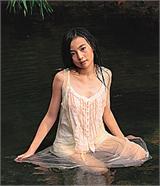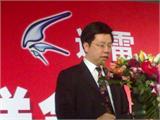"A Brief History of the Development of Chinese Feng Shui"
Content Summary:
The entire book narrates the process of Chinese Feng Shui from its ancient inception and development to the modern era, where various schools of Feng Shui emerged, with most gradually veering towards江湖化 (a term that could be interpreted as becoming more folkloric or superstitious). The article outlines the main ideas and theoretical perspectives of different Feng Shui schools, along with their similarities and differences. It focuses on introducing the Feng Shui views, theoretical foundations, and classic texts of Guo Pu from the Eastern Jin Dynasty and Yang Yi (Yun Song) from the Tang Dynasty, both of whom held materialistic dialectical thoughts. The author also provides a relatively correct and scientific discussion on how to historically view Chinese Feng Shui. This book serves as a good introductory article for readers who wish to understand and study the development of Chinese Feng Shui and its primary historical and literary classics.
Chapter One: The Bud of Chinese Feng Shui
Section One: Primitive Feng Shui
According to legend, in ancient China, Youchaoshi invented tree-dwelling while Xuanyuanshi invented cave-dwelling. Tree-dwelling refers to people living among trees. This method of living in trees was widely used in low-lying areas or during humid and hot seasons, later evolving into stilt houses. Even today, many ethnic groups and regions still use this type of dwelling, such as in Africa, Southeast Asia, and southwestern China. In high-altitude or cold areas or seasons, primitive humans chose natural caves as their shelters. This has been proven by archaeology, such as the Beijing Man, the山顶洞人, and the Ma Ba Man in Guangdong, all of whom lived in caves. As the ancients said, "In summer they live in tree nests, in winter they live in mountain caves."
Primitive humans, in order to resist external natural attacks, such as wild animal assaults and climate changes, chose to live in trees or caves. These living conditions, apart from considering the safety of whether the trees were sturdy or if the earth caves would collapse, might also have considered factors like sunlight exposure, climate changes, suitable location, ventilation, and lighting. This concept of adapting to nature and utilizing nature is the original viewpoint of Chinese Feng Shui, which is China's primitive Feng Shui technique. The implementation of building nests in trees or clearing weeds and mud from caves can be considered the beginning of China's construction engineering or architecture. This long period of Feng Shui can be referred to as China's primitive Feng Shui or primitive architecture.



